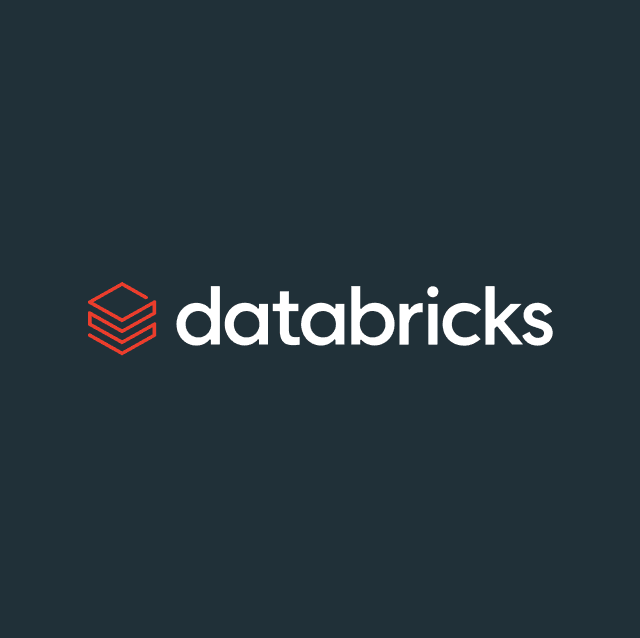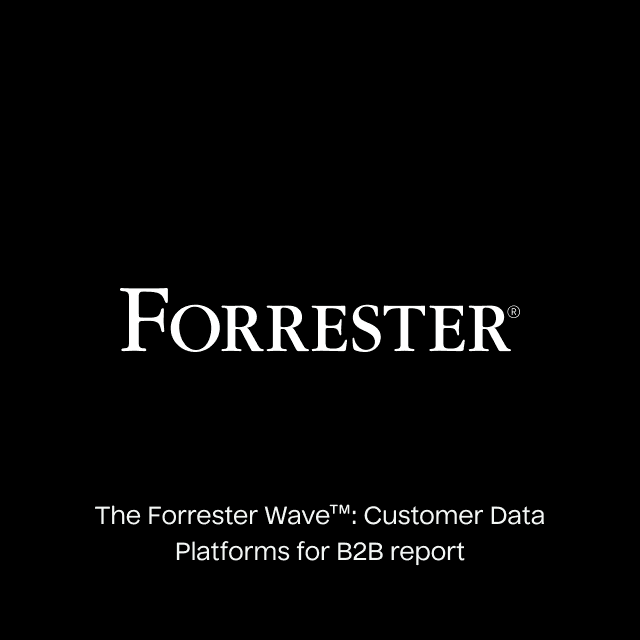Companies are increasingly reliant on digital marketing and sales strategies to grow. These strategies require highly effective data infrastructure. The dominant approaches to providing that infrastructure are ineffective. By thinking laterally and trying a new approach–enabled by data teams and centering on the warehouse–companies are unlocking new growth.
Executives and board members make their way by plane, train, car, and Zoom link to this year's board meeting to ratify the annual plan.
The discussion centers on growth. The plan confidently declares that this is the year to tap new revenue streams online, drive more efficient acquisition in digital channels, and improve repurchase behavior through loyalty marketing.
The plan passes with flying colors, and word passes down to the responsible Marketing team - "85% of your budget is approved. That'll have to do. We'd like a progress report in 90 days".
Teams turn to one another, their trusted consultancies, and vendors - they know what they need to do. The next question is, 'how do we do it?'
This article suggests that there is an insular and 'traditional' way for marketing teams to solve this problem that tends to result in a bad outcome for everyone involved. It also suggests that by thinking laterally and more broadly about how to activate a company's existing resources and teams, the problem can be solved more quickly, effectively, and at a lower cost.
Alexander The Great and the Gordian Knot
The term "Gordian Knot, "often used to describe a complex and seemingly unsolvable problem, can be traced back to a moment in the life of Alexander the Great. According to legend, an incredibly complex knot was used to tie a chariot to a pole outside a palace in the city of Gordium in modern-day Turkey. The knot was said to be tied so intricately that there was no possible way to find where it started or finished, let alone untie it. Given its complexity, the local priest proclaimed that anyone who could one day free the cart from the pole would rule all of Asia.
For years, the wise and the great traveled from all around to solve the puzzle in hopes of claiming the throne. However, one after another, they were defeated and went home disappointed. The puzzle remained unsolved until a young Alexander the Great arrived. Rather than attempting to untie the knot like those before him, Alexander took a different approach - drawing his sword and cutting the knot in half with a single stroke to free the chariot and fulfill the prophecy.

This piece is not meant to be a history lesson or a discussion of knots. Instead, the point is to highlight that a fresh perspective and thinking laterally about a problem can often let you solve something previously intractable without massive innovation or resources.
Customer Data Has Us Tied up in Knots
Today's digital organizations face their own version of the Gordian Knot. Like the knot, the initial goal is deceptively simple. Market the right products, to the right people, at the right price, at the right time. Yet the closer you look, the more complex the knot appears, and the more you tug on it, the tighter it gets.
If a business wants to execute effective digital marketing campaigns, marketers need to be able to find their audience, both in their databases, and across the web. They must understand their audience's past behavior and guess future preferences. They then need to merchandise the right products and offers to those individuals in the appropriate context. And they need to do so profitably.
Meanwhile, the world conspires to make it difficult. Marketers are saddled with incomplete data about their customers. That data is governed by increasingly complex and constantly changing privacy regulations. Customers are continually moving across new and old digital marketing platforms, with tastes or needs that shift rapidly over time. Oh, and also finding ways to deceive and exploit marketers is a multi-billion dollar industry populated with the savviest scammers alive.
Tasked to solve this, the approach that most marketers take to the problem begins to look just as complicated and unwieldy as the problem they set out to solve. There are two main tracks that we see companies choosing to pursue over and over again.
Point-to-Point Solutions Marketers have any number of places where incomplete but valuable data about their customers reside. These can be e-mail tools, random spreadsheets, CRM systems, etc. For many organizations, the simplest thing to do is to use native connectors and point-to-point tools technologies like Zapier, Tray, Syncari, and Workato to connect up those systems and start sharing data.
It can be an attractive option for marketing teams looking to leverage their customer data quickly, as they let you define triggers and actions to send data from one platform to another without code.
There's not a ton of analytical capability or sophistication available to deal with all the challenges ahead, and a comprehensive picture of a customer is not attainable. Still, you can get something working reasonably quickly and that's appealing.
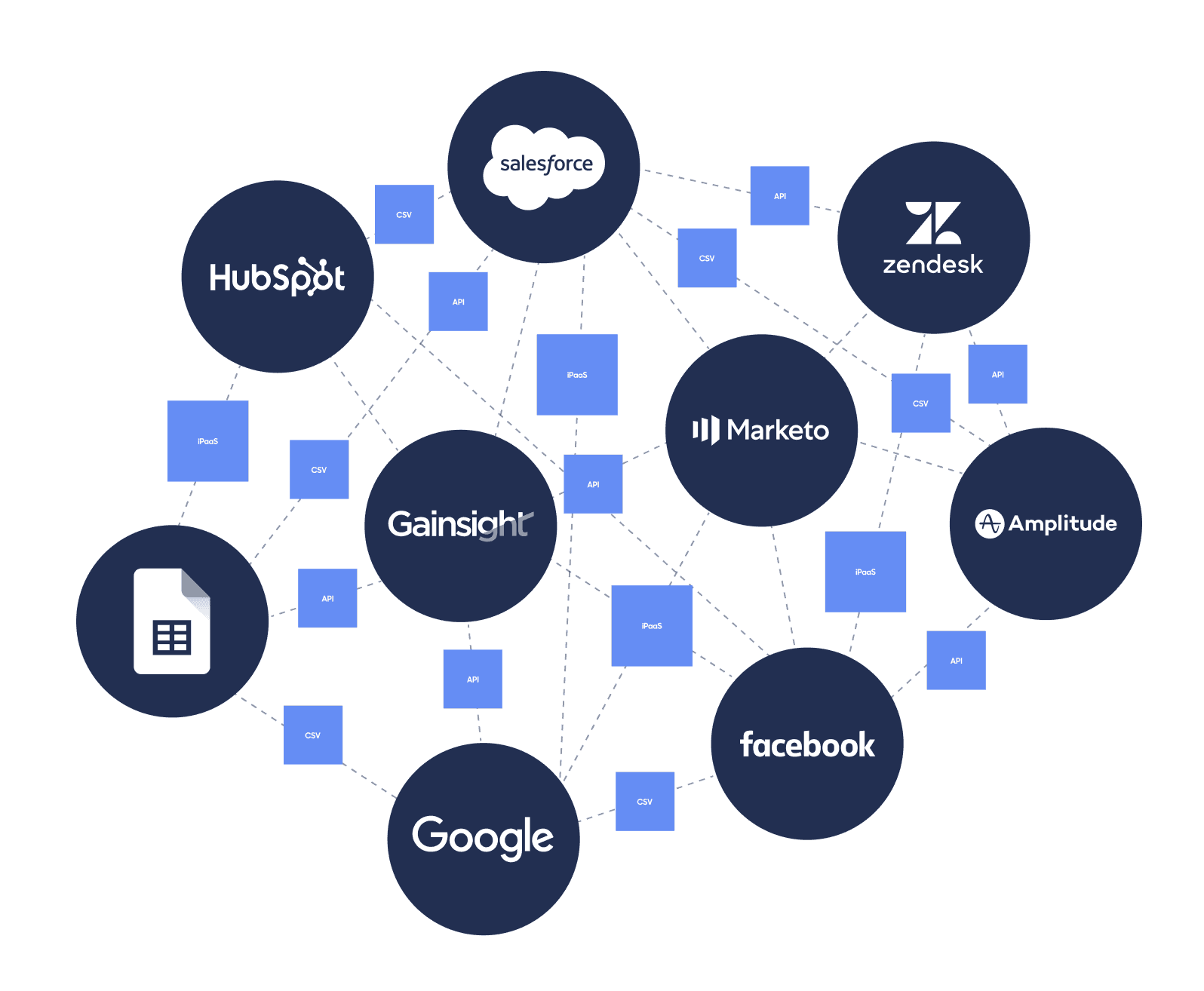
IPaaS Solutions
Bundled Customer Data Platforms (CDPs) The second well-known solution that companies pursue is off-the-shelf CDPs like mParticle or Segment. These bundled solutions promise to collect and consolidate customer event data into a single profile before offering tools to define audiences and activate the data to downstream systems.
This approach holds up lofty promises of resolving all questions of digital identity and making it easy to market to individuals across various channels.
The problem is that they're complex to implement - often taking 12 to 18 months - and are incredibly rigid. They work in the particular set of relatively simple scenarios they were built to work in. Trying to move even slightly beyond those limitations - to handle related objects or entities, for example, is beyond their capacity.
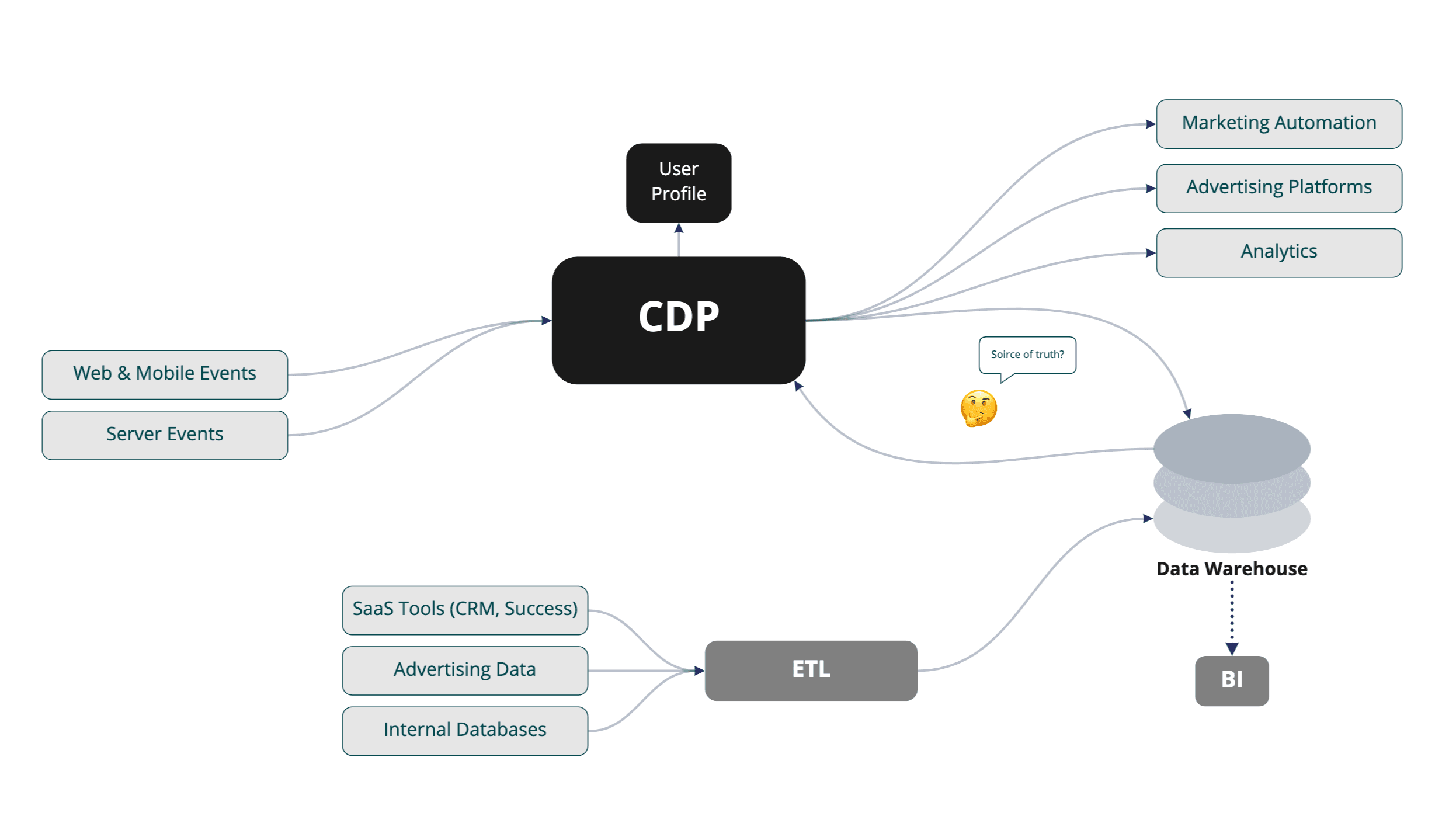
Bundled CDP Architecture
So why do teams keep returning to these same old solutions to untie their Gordian knot? There are really two reasons:
Most marketers are not technologists: The people that tend to drive these initiatives are marketers - not technical experts. That's not an indictment of marketers; instead, it means that there are ways of doing things outside their domain knowledge that could help them succeed but that they simply don't know. The result is marketers embracing approaches for untying the knot that have repeatedly failed in other contexts.
The solutions are tantalizingly simple, but the problem is more complex than either approach acknowledges: We'd all love to buy something off the shelf, follow the instructions, and have the most devilish problem of our careers disappear. But these solutions have existed for ages. If it was really that simple, wouldn't everyone have already done it?

The New Gordian Knot
What people are missing is that there is a lateral solution - the equivalent of Alexander’s sword available to them. They just need to look at the problem differently.
Data & Analytics and the Data Warehouse
The solution to slicing the Gordian knot of customer data and enabling digital growth initiatives is characterized by two main attributes - looking at newer technologies like cloud data warehouses and a new partnership between marketers and their data & analytics peers.
This is so interesting as a lateral solution because your company likely already has both in place. This isn't about conjuring some magical new solution. It's about using the capabilities you have in a new way to solve an age-old problem.
Think of the cloud data warehouse as the sword and your marketing and data partnership as Alexander.
Cloud data warehouses are uniquely effective at cutting through all the complexity of managing customer data. They can effectively store unlimited amounts of customer data at (comparatively) cheap prices. They make it easy to organize and access that data at an enormous scale that was previously too expensive and complex to build on your own. They offer the ability to explore those vast pools of data looking for insights much more quickly and by more people than previous technologies.
As a result, data warehouses are the perfect place to create meaning around complex and elusive concepts like:
- Which actual individual does this seemingly random assortment of online behaviors actually represent?
- What have they bought in the past?
- What should I try to sell them next that fulfills what they want and is profitable for me?
These are questions that cloud data warehouses were invented to help answer, and no previous pattern for resolving them comes remotely close to being more effective.
This technology's stunning adoption rate and overall category growth bears out the cloud data warehouse's power.
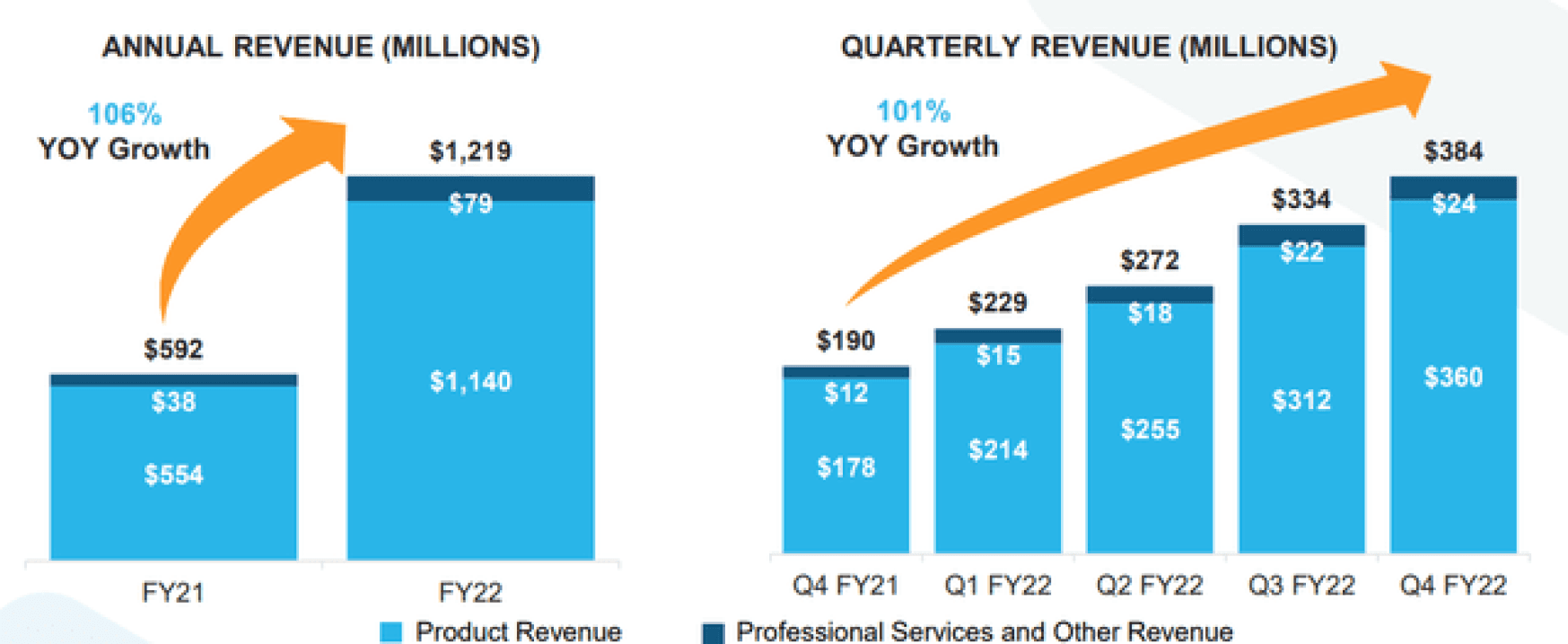
So, you’ve got a sword - but can you use it to cut a knot without cutting yourself? That’s where data teams come in.
First, we should acknowledge that data teams and marketing teams don't necessarily work all that well together.
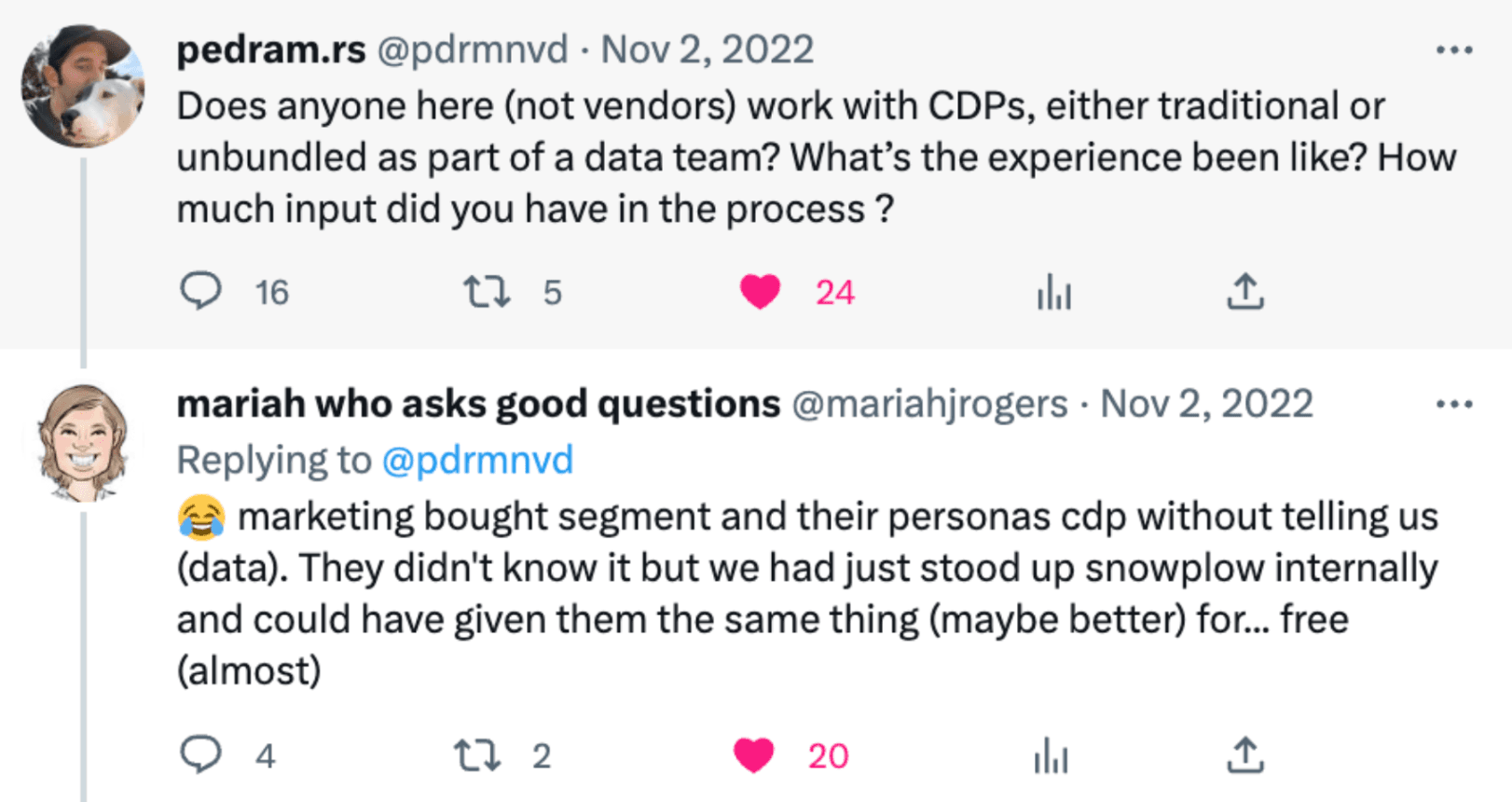
This happens every. single. day.
This exchange is not only real but a perfect encapsulation of how most companies struggle to gather and use customer data to fuel growth. Everyone is well-intentioned, but the outcome is wildly unproductive and wasteful. Another company tangled in the gordian knot.
It doesn't have to be this way. The truth is that there is nobody in a better position to help deliver customer data to front-line marketers than the actual data organization. The data team has all the necessary skills to gather, clean, organize, and analyze customer data.
It's their literal job to know things about customer behavior - this means they're very likely already preparing the data to build dashboards and study experiments across an organization.
Today, at most organizations, an analytics team knows precisely how to answer all the most exciting questions marketers have. But most of that knowledge either goes nowhere, finds its way into a dashboard, or manifests as a weekly emailed report.
Is it really such a leap to go from preparing data for dashboards to using the nearly exact same data to help marketers execute programs?
I’ve Got a Sword and I’ve Met Alexander. What Now?
Marketing and data leaders at many organizations are partnering to adopt a new hub-and-spoke data architecture dubbed the "Composable CDP" that puts the cloud data warehouse at the center of the organization to solve their customer data problems.
With a Composable CDP, the data team stores and models all customer data once in a cloud data warehouse. This store of customer data is then made readily available for both analytics and marketing purposes alike to ensure the organization is working off of one central source of truth.
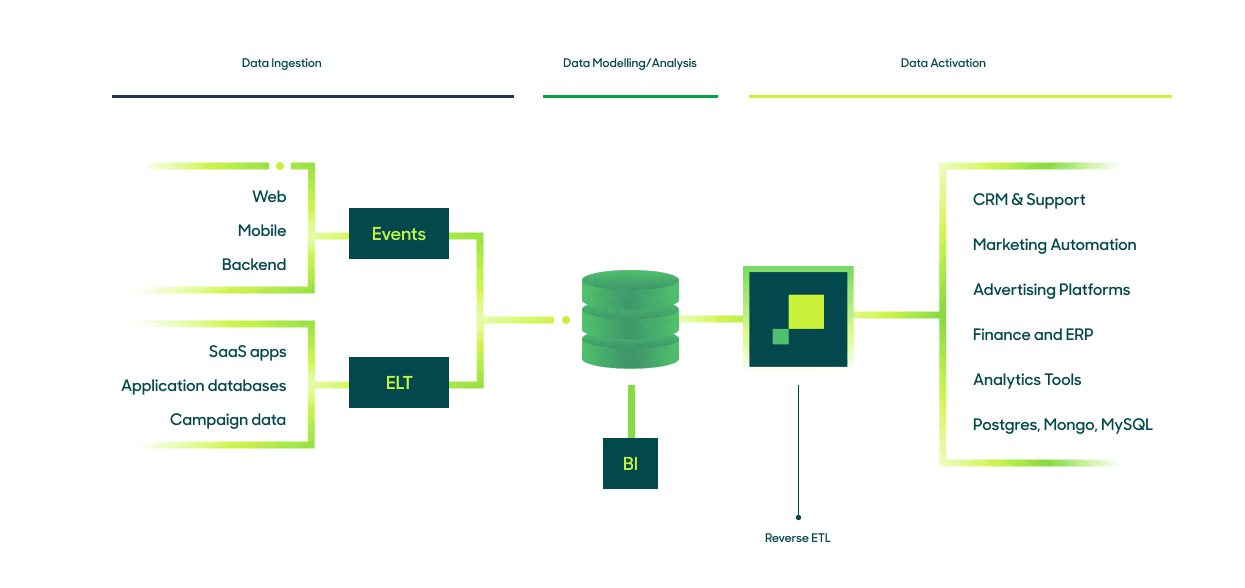
The Composable CDP
With this architecture, the data team is tasked with providing analytical clarity to their business partners. Their job is to ensure the central source of truth is full of rich data about the business and valuable models that help identify growth opportunities.
Meanwhile, marketers can't work out of the warehouse directly. Marketers are at home in e-mail tools and ad platforms. They identify placements for videos or plan huge-scale direct mail campaigns. The connective tissue between the source of truth and these end-points is called Data Activation.
Data Activation can be done sub-optimally with custom pipelines and spreadsheets or much more efficiently with Data Activation platforms like Hightouch that connect directly from the data warehouse to hundreds of tools where marketers work. But regardless, the knot isn't truly gone until marketers are actually able to do something with the valuable insights in the data warehouse.
This end-to-end paradigm of a Composable CDP is a very different way of thinking about the world. Still, a comparatively easy one to embrace since almost all of its components are already in place. It offers substantially more flexibility, security, and ownership over data - all at a fraction of the cost of its legacy alternatives. Rather than operating in silos, organizations can capitalize on their existing cloud investments to solve each (seemingly impossible) customer data problem at hand.
Looking Ahead
The next few years will be very interesting in board rooms around the world. Certain companies will solve the collaboration problem between data teams and business teams. They will learn to harness the flexibility and power of their cloud data warehouse for customer data problems and use those powers to differentiate and drive growth.
Others will keep trudging up to the same old knot and the same old technique for untying it and wonder what they're doing wrong.
In time we'll all come to see that there's a better, more straightforward way to solve this problem that's bedeviled us for far too long.
Onwards.
Tejas










